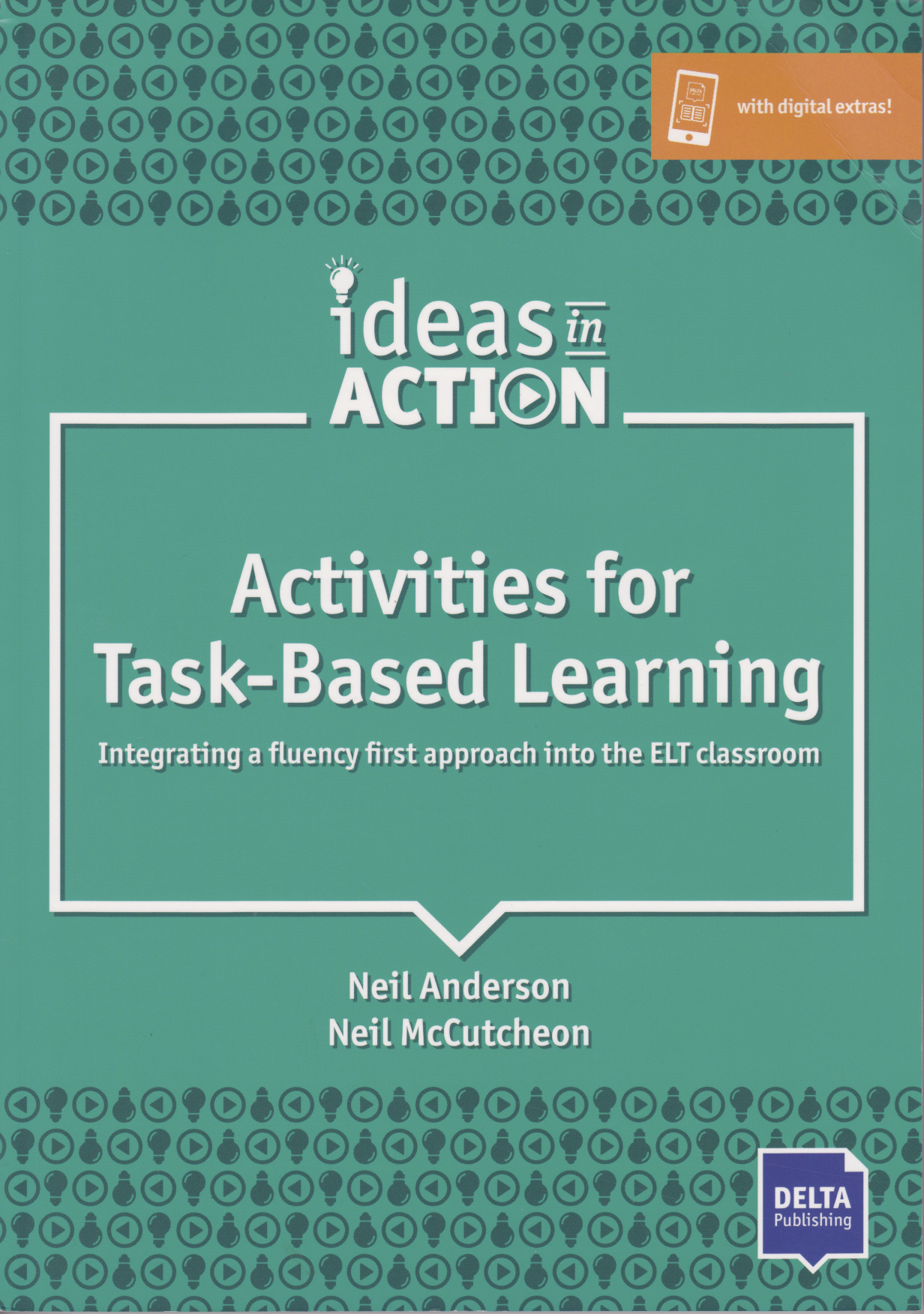Activities for Task-Based Learning

Activities for Task-Based Learning
by Neil Anderson and Neil McCutcheon Delta Publishing 2019 978-3-12-501701-6
As Jason Anderson points out in the preface to this book, task-based learning (in which students learn a language as they carry out meaningful communicative tasks) is one of the best-known approaches in communicative language teaching, yet there are few practical resources available for teachers who would like to implement it in their own classrooms. This book succeeds in going some way towards filling that gap.
The ‘recipe style’ presentation of activities is common in resource books: information about levels, aims, language point(s), materials required and timing at the top, followed by procedural steps. The difficulty with putting together such books is that many activities can be used with different levels or can very easily be adapted for different levels; some activities can be used to practise many different language points; and the time that an activity will take depends entirely on the size and nature of the class involved. So all these things are very much ‘finger in the wind’ guesstimates, and it sometimes seems overly prescriptive to have the same set of headings above each task. Nevertheless, teachers expect to see such information at the top of an activity, and writers often feel pressurised by publishers to include it (sometimes against their better judgement), simply because of the expectation that it will be there.
The authors of this book have got around this problem by having an ‘About the activity’ introduction each time, which explains the variations and extensions that are possible and how the activity might be repeated, along with a variety of language points which might be practised in it. This leaves just the level, age, time and materials headings to sit above the procedural steps, so teachers can find these headings easily as they flick through and then spend more time considering the language they want to practise and any adaptations and variations they may want to consider by reading the introduction to it. A structural index at the back of the book, divided into Grammar and Lexis/Functions will help anyone who is looking for an activity to practise a particular language point. The activities themselves are clearly presented, engaging and often accompanied by photocopiable worksheets. They seem fresh, interesting and liable to be of interest to students. I particularly like the task in which the students have to read and discuss four stories and decide which of them is ‘fake news’.
After an introduction to task-based learning (Chapter 0), and a section on micro-strategies and tools for the pre-task, on-task and post-task phrases of the lesson, such as techniques for establishing the goal of a task, or ways of giving feedback (Chapter 1), Chapter 2 starts off the tasks with a number of activities that involve categorising. The tasks in Chapter 3 are ‘opinion gap’ activities, requiring the students to compare and evaluate opinions and experiences. Those in Chapter 4 involve analysing and solving problems; those in Chapter 5 are about sharing personal experiences. Chapter 6 has tasks in which the students have to create or design something, and Chapter 7 brings the whole class together to work on a shared problem or task.
Some of the tasks have downloadable audio recordings, and transcripts of these are available on the Delta Publishing website.
Janice Shipton Bath, UK
Comments
Write a Comment
Comment Submitted